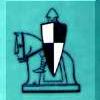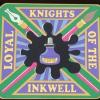Search the Community
Showing results for tags 'bakelite'.
-

Bakelite Fountain Pen With Japanese Cloisonne Shippoyaki Art
TaizoOkagaki posted a topic in Japan - Asia
I just recovered from influenza but I am so excited to tell you a story that I also just told my friends on Facebook. Around 15 years ago, Japanese Shippo artist 岡垣幸得 (Okagaki Yukie) presented me 2 big frames (1 of them is in second picture).They are handmade with Japanese Cloisonne or 七宝焼 /shippoyaki/.These two were supposed to be displayed in Museum but she chose to give to me.At that time, I thought, how wonderful it is to have this art on a fountain pen. But honestly, it seemed impossible haha.A few years later, that idea still hang over my head so I came back and talked with artist Yukie about this idea.She said "I can make a small piece of shippoyaki, but it will be harder".I was never more excited than that. I spent many more years researching and testing how I can make a fountain pen with this precious art.I tried with ebonite and plastic and celluloid but all failed. Ebonite didn't work out with piston filler mechanism I have, plastic was not a good idea for a traditional pen and celluloid is so hard to carve.But finally there was one material that made my idea become possible, it is bakelite. It is rolled up from many layer of paper.And it works best with piston filler. But most importantly, I can carve the Shippoyaki on top of the pen for forever use. Sadly, there are not many Shippo artists nowadays. I am already old and Master Yukie is also very old now but we really want to make this art continue.I would never expect that a small idea of 15 years ago would turn out to be real now. I just want to say that if we try, there will be good result. I feel thankful that master Yukie gave me this treasure.In Japanese, Shippo is written as 七宝 which means Seven Treasures. So I call this fountain pen Seven Treasures.Do you have any other name suggestion? If you might want to read more, you can go here.https://www.wancherpen.com/pages/shippoyakiI have a giveaway of one prototype for one of those who help me fill a survey about this pen.Please help if you also care about unusual arts and fountain pen. Thank you very much again!- 14 replies
-
- fountain pen
- bakelite
- (and 6 more)
-
By the way, while I'm thinking about it, does anyone know of any variety of ringtop pen that carries an oversize nib? The biggest I've ever seen is on my Dorics, but they're only slightly larger than the typical #2 nibs of the time.
-
I bought a YUGE Dunn pen with a wonderfully flexy nib, but the barrel has a piece broken off it (the piece is included). I asked the seller if it wasn't bchr, but he insisted that it was Bakelite and could be repaired. So I researched Bakelite repairs, and it appears that the antique radio and telephone fanciers have a variety of methods to keep their prizes in one piece. I'm curious to see if anyone has tried any of those methods with pens. If it's fixable, I might try to keep the bits together because that magnificent nib may be too big for any of my ringtop pens - even my Dorics.
-
I've had this pencil for a number of years, but only took it out of the drawer in the past few weeks. It came in a bargain lot of pens and pencils on eBay, and it was a couple of the fountain pens that actually interested me. But coming across this when going through my things, I decided to try cleaning it off, and putting an old 0.046 inch (1.18 mm) lead in it. And it turns out to be nice enough to use, comfortable in the hand, a good size and weight. It won't become an absolute favorite, and it's not one I'd take with me everywhere, but it's in my main writing area at home. The material appears to be Bakelite, or something similar. At any rate, it doesn't look like a modern plastic. The marbled pattern of light and dark brown is more attractive than quite comes across in my pictures. The only writing is some worn engraving around the top cap. Getting a good picture of that defeated me, but it almost certainly says "Autoscript" in a flourishy cursive. The standard notices "PATD AND PATS PEND" and "USA" are in block capitals, and still clearly legible. Here is a disassembled view: This particular twist mechanism may not be the best, partly because it only takes very short pieces of lead, but it does work. The old leads that I have in there seem about the equivalent of an HB. The top cap covers a small compartment that seems to be for spare leads; I doubt that there was ever an eraser in there. On the whole, probably nothing that special, but it seems interesting, and likely old enough to count as "vintage". Some searching on this site and on the web has come up with nothing. Does anyone know anything about pencils of this general pattern, or this one in particular?
- 5 replies
-
- autoscript
- bakelite
-
(and 3 more)
Tagged with:
-
Hi, I will soon be in possession of an early Pelikan 100 with a bakelite body. One of the potential issues with the pen are the cap threads which are reportedly worn quite smooth (they are rough/have problems keeping the cap captive etc.). I was thinking about how easy it would be to refurbish the threads (as in remake them entirely)? Something along the lines of: - Machine the threads out. - Create new substrate for the threads by filling the area with a dyed epoxy mix. - Let it cure and then machine new cap threads. DISCLAIMER: I will inspect the pen when it is in my hands, and if possible, avoid doing anything of that nature to that pen (less is more). Going by the pictures from the auction there is a chance that the roughness is just some crud that had formed on the threads, smoothing those out should help. Bonus question: - Anyone in the know of a repairer in the EU who could do that (I have a hunch that fountainbel will get a shout or two) and who could also redo the gold platings on the trims among other things such as replacing the cork piston seal?
- 3 replies
-
- pelikan100
- pelikan
-
(and 1 more)
Tagged with:
-
There is plenty on line about the plain tack twist repair. This is NOT about that version. Does anyone have any experience or pointers with the Ingersoll pens with the threaded tack that has arrows and the "empty" and "fill" on the tack? The inside of the twist unit appears to have a slot for a screwdriver. The threaded part of mine was pretty rusty looking, so I am not sure if the parts are stuck, or if my assumptions are wrong. My pen is open, sac is out. I am putting a long screwdriver down the barrel into the slot (looks just like it is the head of a screw....) and trying to twist off the end knob. I would appreciate any input from someone who has restored this model before.
-
I bought my first fountain pen at an antique stores a few weeks back. I opened it right when I got home, and found that the section and feed were completely shattered, with the nib rattling around in the cap. I (with difficulty) pulled the section out and found the ink sac to be completely deteriorated, and the rubber plug at the bottom (this being the twist-filler model) to be deteriorated beyond repair. The pen is missing its clip and has a few scratches on the barrel, and the brass on the inside of the barrel where the section was fitted is greenish and slightly corroded. My question is this: how can I reconstruct this pen? It's the perfect shape and balance for me and I love the color. I've been looking up nib units from other brands that might fit (as trying to find another Ingersoll dollar pen is out of the question it seems) and the closest contender has been the Sheaffer No-Nonsense section / nib unit ensemble. Then there's the matter of the plug. I'd have to find a replacement for that as wel. The clip is gone too, but I actually like the way it looks without it. What sections / nib units could I use with my Ingersoll dollar pen? I've resigned myself to making a frankenpen, I just want a section that fits and a nib that isn't too bad. Thanks! The place where the section should be: http://i.imgur.com/HuHBNi6.jpg The complete pen: http://i.imgur.com/vRlL27Q.jpg
-
Let me outline my problem so my question will make sense... I have a no-name gold filled pen with a flex nib that I got for what I could afford off the ___bay. (That is to explain why I am not taking the exceedingly rational course of just packing this up and sending it to someone who knows what he is doing.) I managed (through injudicious use of tools in an attempt to remove a piece of pressure bar) to break what seems to be the Bakelite part of the barrel which is threaded so the cap can screw on, and smooth on the inside so the section can fit in. Little pieces of this black material are missing. Given my latheless state, after much consideration I decided that probably my best bet is to fit a collar in there and then do what I can with epoxy to repair the thread part, but to rely on the collar to keep the section in. Obviously this means the section will need a little sanding after all is said and done, but I can do that by hand. Looking around at what's here, it seems to me that part of the barrel of one of my 20 cent pre-FP life Write Bros. Pens will probably do the trick. Plan is to carefully mark what part of the slightly sloping barrel I need for this, cut it, make sure it fits, and then glue it in there. The question is what glue to use. The barrel is soft, injection molded plastic, the other stuff really strikes me as being possibly Bakelite. I do understand, as I mentioned earlier, that the optimal fix would be packing it neatly and sending it off to someone who knows what he or she is doing, but the pen was on a par with the rest of my pen budget, and a repair will require a skill and amount of time that will exceed several times the price of the pen, and which is not in the budget. Any advice will be appreciated! Thank you T
- 14 replies







